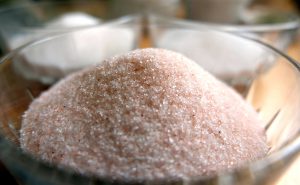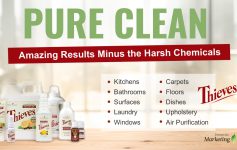
Is This White Crystal Really the Villain of Heart Disease, or Guilty by Association?
Among the combative disagreements, a few glimmers of hope sometimes emerge that nutritional experts may one day wave the white flag on the dietary wars. Recently, one was witnessed with the release of the 2015-2020 Dietary Guidelines regarding the former dietary villain, cholesterol. Although many former egg-lovers once again delighted in their omelets, there is still a long way to go in finding a common consensus in what entails a truly “healthy diet.”
Recently, I listened to a podcast that aimed to show the redeeming controversies of an essential nutrient that also has an unhealthy heart connection. But, should it?
The Controversy That Lies in the Salt Shaker
According to current guidelines by the Center for Disease Control and Prevention (CDC) and the American Heart Association (AHA), Americans should limit their salt intake to 2,300 mg, or 1 tsp, or less a day of salt. However, beyond the salt shaker, it is noted that the processed food diet is a major contributor to the excessive high levels of sodium in our diets.
In a recent podcast with researcher and physician, Dr. DiNicolantonio, salt was exalted. He had previously argued in Open Heart journal that we have been pointing the finger on the wrong white crystal for heart harm, and that salt was an innocent bystander. This argument fueled the fire and headlines, such as Discover Magazine’s 2015 article “Sugar, Not Salt, Is the Real Dietary Villain.”
Some important take-aways in his conclusions included:
- Sugar may be more meaningfully related to blood pressure than sodium, as suggested by the greater magnitude of effect with dietary manipulation.10 ,77
- Reducing the amount of sodium in processed foods may lead to an increase in their consumption causing a greater prevalence of cardiometabolic disease (figure 1).23
- Higher sugar intake significantly increases systolic (6.9mm Hg) and diastolic blood pressure (5.6 mm Hg) in trials of 8 weeks or more in duration.77 This effect is increased to 7.6/6.1 mm Hg, when studies that received funding from the sugar industry are excluded.
- Ingesting one 24 ounce soft drink has been shown to cause an average maximum increase in blood pressure of 15/9 mm Hg and heart rate of 9 bpm.81
- Those who consume 25% or more calories from added sugar have an almost threefold increased risk of death due to cardiovascular disease.62
- Fructose has been shown to stimulate sympathetic tone directly,26 and indirectly by inciting insulin resistance and hyperinsulinaemia.27 ,45 ,46
- An increase in sympathetic tone from the overconsumption of fructose is one likely mechanism for the sugar’s ability to increase heart rate, cardiac output, renal sodium retention, and vascular resistance, all of which may interact to elevate blood pressure and increase myocardial oxygen demand.27 ,80 ,82
Interesting, many studies do support that too little salt is detrimental to health. However, as with any nutrient, the Goldilocks principle of just the right amount is advocated for. For salt, this is a “J-shaped curve.” (1, 2, 3, 4, 5) In Nutrition Today, the author summarizes this current research perspective:
As it turns out, several recent population-based studies have shown persuasively that risk of both CVD and mortality follow U-shaped (or J-shaped) curves relative to sodium intake, with risk of mortality and CVD rising both as intakes drop below 3000 mg/d and as they rise above 7000 mg/d.12–15 In this behavior, sodium acts exactly like most nutrients.2,10 The reports concerned have dealt with patients with diabetes and CVD, as well as the general population. In all these studies, risk was lowest at a sodium intake in the range between 2800 and 6000 mg/d. Concordant with these findings is a report by Stolarz-Skrzypek et al,16 who pooled 2 large prospective European studies, with up to 15 years’ follow-up. They found a nearly 4-fold increase in cardiovascular mortality as sodium intake decreased from the highest tertile to the lowest and an approximate doubling of CVD events across the same decrease in intake. The long duration of observation in these studies virtually excludes reverse causality (ie, the possibility that the low-sodium-intake groups were such because of preexisting CVD). Finally, even in a large cohort of hypertensive patients (N = 398 419), lowering of blood pressure below “normal” values (130–139 mm Hg) prospectively resulted in increased risk of both mortality and end-stage renal disease.17
The Bottom Line and Take-Away
I believe any extreme in diet will ultimately cause an imbalance and downstream negative impacts. Whenever we chronically restrict anything, unless done therapeutically and with superb clinical expertise, side effects will occur.
I say, eat real food. If you are confused and not getting the health benefits you wish from your diet, find a functional medicine or naturopathic doctor who can help. They will guide you in implementing the right diet and supplemental support for you, as an individual.
If you want to learn more about salt benefits, click here for my latest blog.
In the meantime time a breathe.
All this dietary chaos can trigger stress!
Thankfully, we have essential oils to modulate all the food craziness that can activate high blood pressure. Two of my favorite oils for heart health are ylang ylang oil and bergamot essential oil. Read more on my database here.
Disclaimer: This information is applicable ONLY for therapeutic quality essential oils. This information DOES NOT apply to essential oils that have not been tested for purity and standardized constituents. There is no quality control in the United States, and oils labeled as “100% pure” need only to contain 5% of the actual oil. The rest of the bottle can be filled with fillers and sometimes toxic ingredients that can irritate the skin. The studies are not based solely on a specific brand of an essential oil, unless stated. Please read the full study for more information.
This material is for information purposes only and is not intended to diagnose, treat, or prescribe for any illness. You should check with your doctor regarding implementing any new strategies into your wellness regime. These statements have not been evaluated by the FDA. (Affiliation link.)



